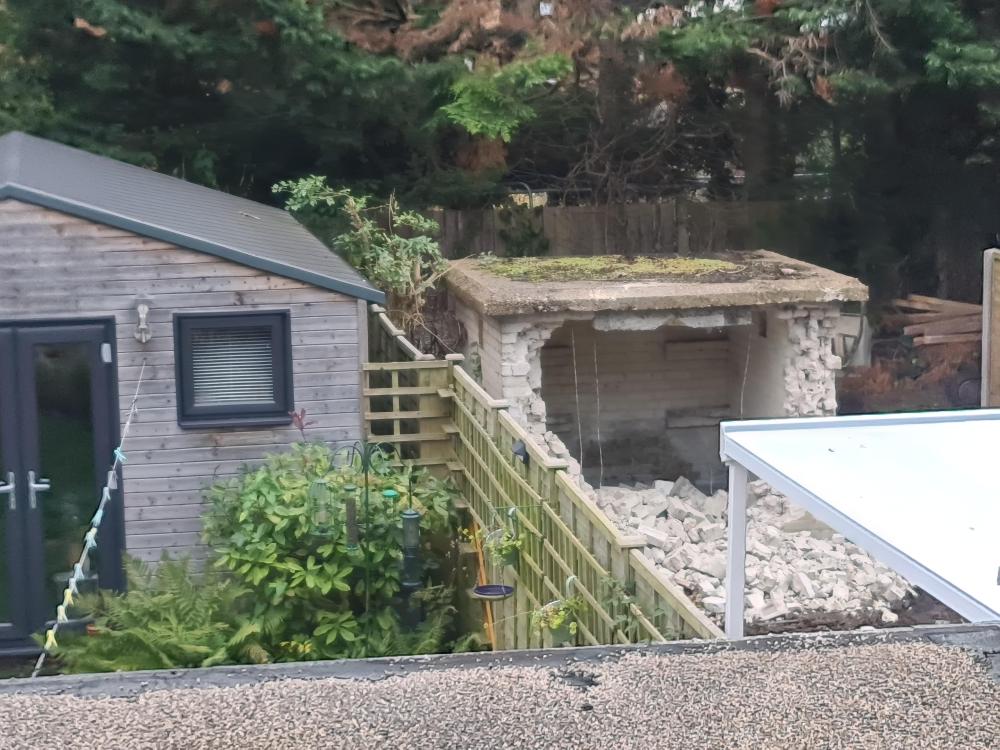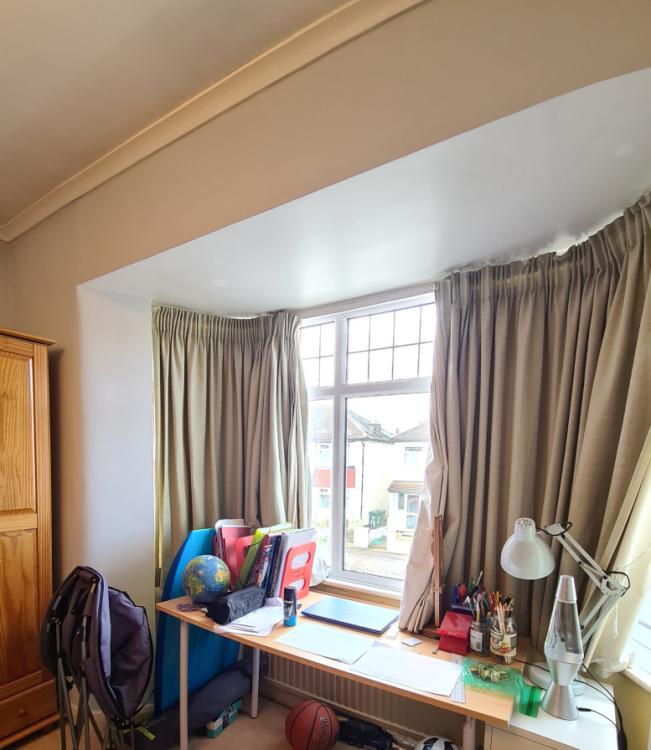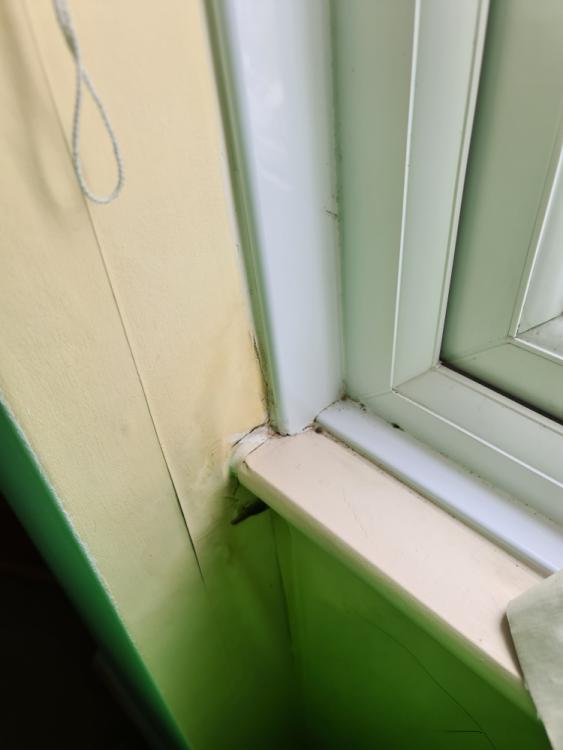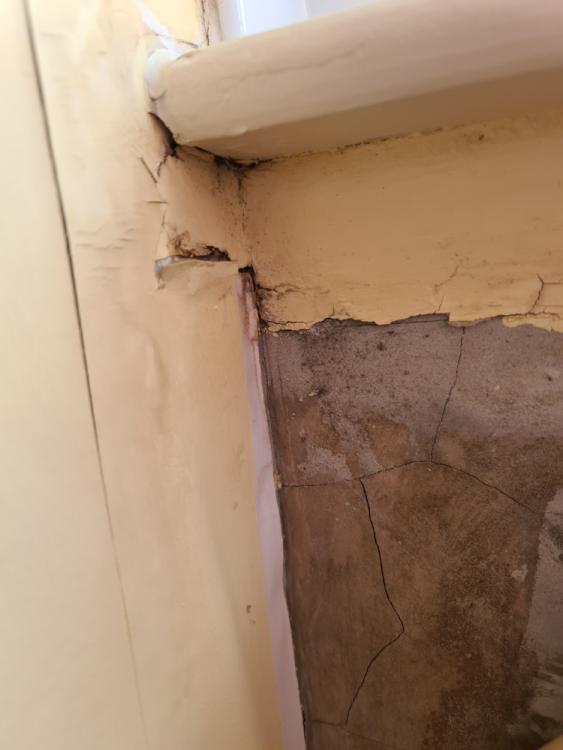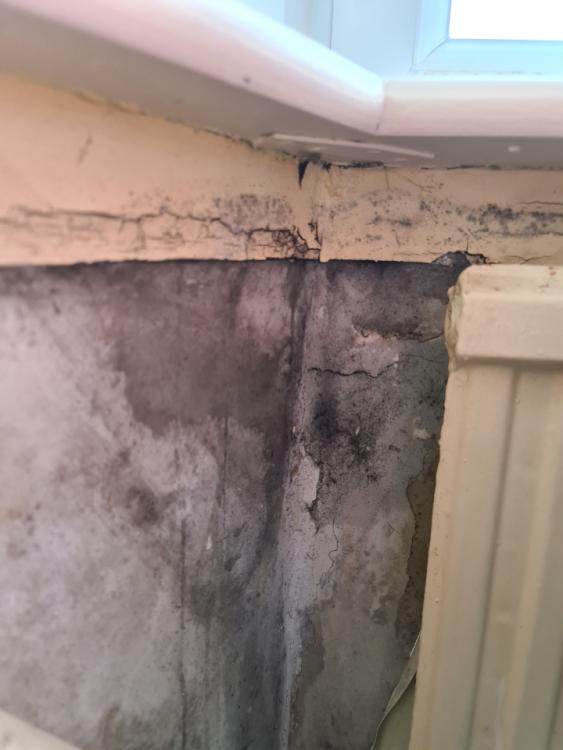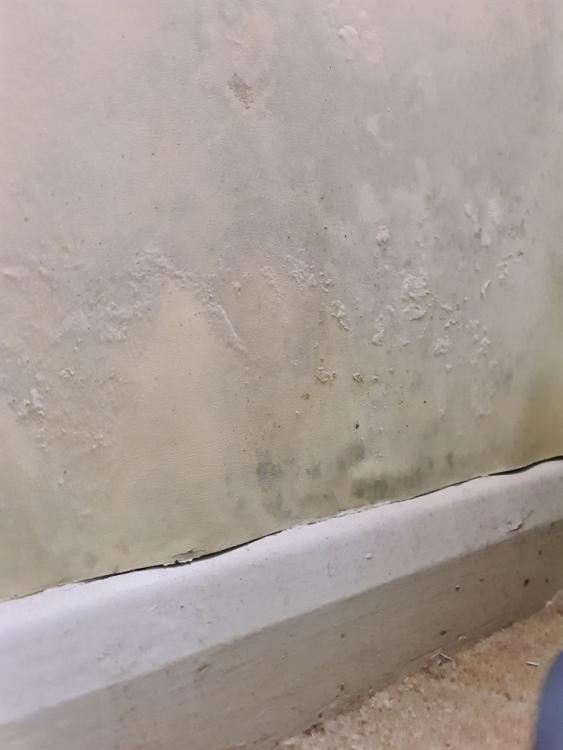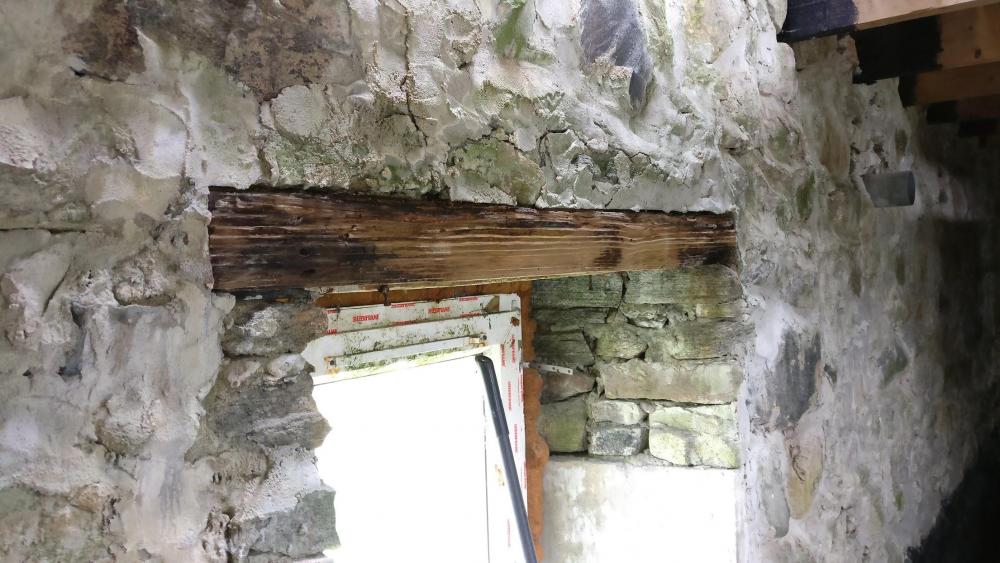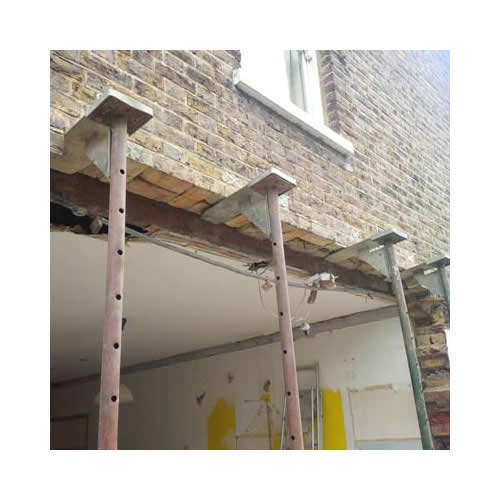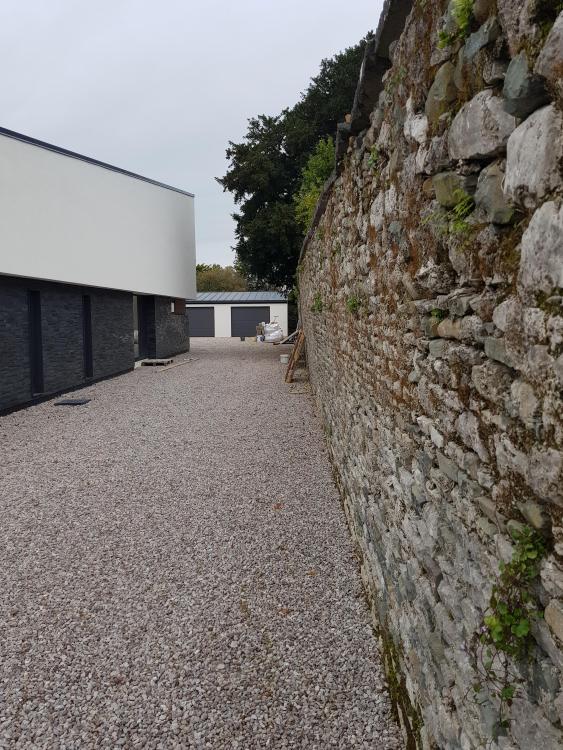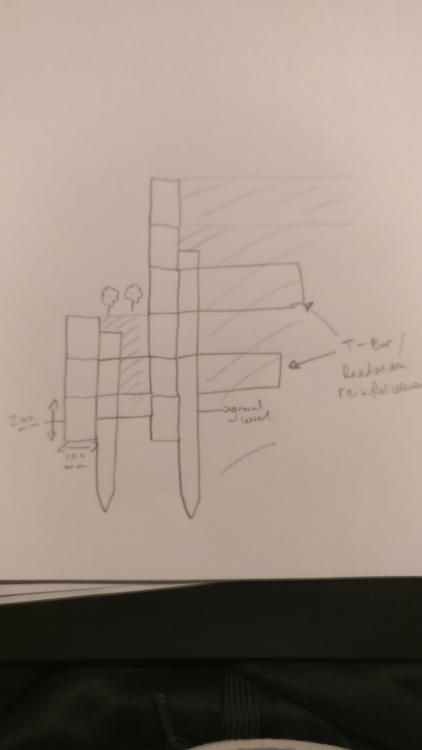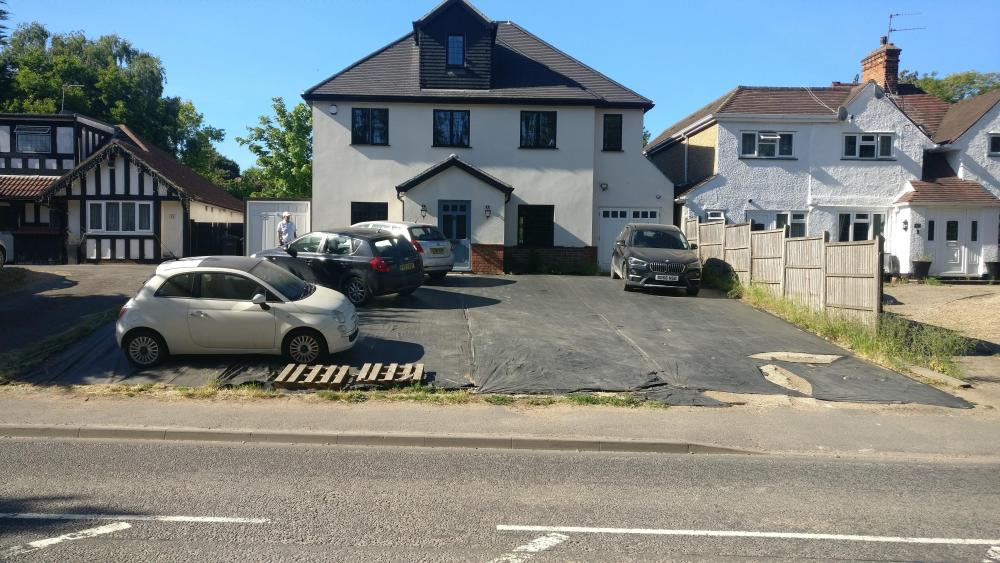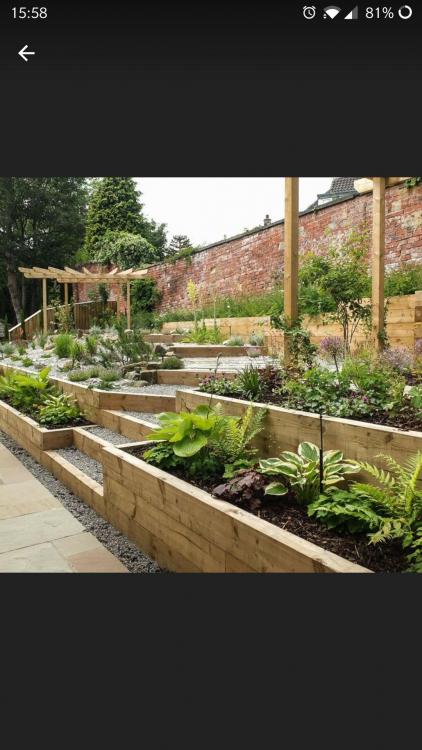Search the Community
Showing results for tags 'wall'.
-
Hi my neighbours builder has knocked down one wall of their brick and concrete slab outhouse and retired for the weekend. This can't be safe can it?
- 39 replies
-
- demolition
- wall
-
(and 1 more)
Tagged with:
-
Hello. We have a first floor bay window that sits on a brick wall that is 1 brick deep with render on the outside. The render had a few vertical cracks which were repaired and the outside of the house was repainted a couple of years ago. Please see the photos. In the middle of the bay window is a long radiator. On the wall beneath the window cill there is damp on the left side where the cill touches the side wall and this damp continues across most of the bay under the cill. There is no dampness on the side walls above where the window cill touches them. There is also white mould on the wallpaper. Where wallpaper has been removed for photos the plaster is cracked and discoloured. Two questions - 1. Could this dampness be due to condensation? 2. Will replastering the wall then insulating it cure the problem? All thoughts welcome. David.
- 6 replies
-
- condensation
- wall
-
(and 6 more)
Tagged with:
-
Hi looking for advice please landscape building a curved wall with piers outside to go around a patio agreed width is 400mm as it will be used to sit on also with some flat coping stones. my plan was a half-brick skin either side with a 200mm void. could I use brick ties to hang over into the cavity and infill with a dry mix of concrete - is this too much, what would be your advice please also does the wall have to be built into the piers so the bricks overlap into the piers and would I need to use ties or could the piers be freestanding with ties and tie the wall into the piers? thanks In advance
-
House is a 1970s box. Has hanging tiles on half of first floor. House generally feels colder than previous house. So, looking to improve heat retention. I got a cost to remove existing cavity wall insulation and replace with blown bead but actually I think spending the money on exterior wall insulation would be better as also want to remove hanging tiles and render the whole house anyway. Any thoughts / guidance / experiences on best materials for exterior insulation and render very welcome! Mike
- 15 replies
-
- insulation
- exterior
-
(and 1 more)
Tagged with:
-
Hello, I am constructing a small shed (3.5m x 2.2m) that will be used only for storage. I want to render the external walls with the K-Rend silicone render to match my outbuilding and my house. I was wondering if you could help me understand what the best way to construct the shed is so that it does not cost a lot and can be rendered. My ideas: - wooden frame + OSD (not sure how easy it is to render over it) - wooden frame + cement board (seems like the way to go) - blocks (seems like a lot more work and expense) any suggestions would be very much appreciated.
-
I am not a structural engineer, so please bear with me I have a cottage wall with a small window that has three (3) wooden lintels supporting the top of it. The wall is approx 2400mm tall and 800mm thick with random stones and a lime mortar mix. It was constructed in the early 20th century. As you can see the wood has dry rot and needs to be replaced with concrete lintels. I have measured and found concrete lintels to replace. My question is getting the lintels in safely. I have looked at various techniques (spikes, demolishing the top part of the wall and rebuild) However they all seem to use brick walls as examples I have come across Strongboys used with Acrow Props, however they might make it hard to manoeuvre the concrete lintels in perhaps. Any advice on how I tackle this? This is a rough idea 1. Double check any loose stones on the surface 2. Put lime mortar on loose parts of wall (if there are any) 3. Insert 2mm piece of sheet steel between wooden lintel and stone wall to prevent any loose bits moving or falling out 4. Try and push two strongboys between wood and steel sheet 5. With a cordless circular saw, cut out the wooden lintels 6. Clean out old mortar 7. Re-mortar 8. Insert concrete lintels 9. Finish with more mortar
-
Hi, walls are all done, roof on, windows all fitted and I've just realised the brickies didn't carry the cavity wall insulation (PIR board) 150mm below the DPC. Stressing out a bit as too late to change it but about to put down floor insulation in prep for UFH and screed. I'll be putting perimeter insulation before the screed but very concerned about cold bridging now. Are there any options for blown insulation into the bottom of the cavity? I still have access in spots where door and window cils not yet installed. Am I worried over nothing or is this a big oversight and will leak heat unless resolved? Thanks.
-
This wall is a dividing wall between us and the neighbours. As you can see it is a fairly substantial wall and very old. Over the years the houses on the other side have raised their ground levels and in some cases it is nearly a metre higher than on our side. The reason for the post is I think it is moving, albeit very slowly. I want to try and involve the neighbours in a nice way to try and avoid very costly repairs. The wall may never need repairing in our lifetime but if it does then I want to ensure that the neighbours are aware of the situation now and what will happen if the wall does need repairing in the future and they do not do anything to mitigate the pressure of the higher ground level on the other side. I may add that the present neighbours are not responsible for the increase in ground level, it was previous owner's that did this. I get on well with most of the neighbours except the one were the wall is leaning the most. I am prepared to go and see then to have a chat and then possibly get a solicitors letter so we have proof of contact stating that we think the pressure needs to reduced in order to prevent further movement of the wall. Can anybody think of anything different without costing the earth in legal fees or really upsetting the neighbours? TIA
-
Hi all, Very much a novice with a small project here but this looks like the place to come to get some great advice and experience. We are landscaping our garden and have just finished decking outside the kitchen door area. There is a very ugly block concrete wall directly opposite the door, running down our lovely new decking which is an eyesore but cannot be changed. It is north facing and gets 0 sun exposure all year round so I cannot hide with planting. We looked at timber cladding it but the opposite side of the house will be timber, as is the decking so I thought that might be too much wood. We have decided to go with Corten to cover it as I really like the look once it has 'weathered'. I think it will work well alongside the timber as well. My question is, how to I fix it to the concrete block wall? Ideally I do not want to have to put timber framing up as it will eat into the decking space. Can I just screw/ nail it to the wall? Do I need special screws/ nails for this? I would like them to bend in with the Corten once it has weathered. I have trawled through Google but have only found one vaguely useful video on how to put it up (attached directly onto the concrete (not block) wall with "Hammer-set" Heavy duty nail drive anchors.). These stand out against the rust colour though and i would like to avoid that. Has anyone else done anything similar? Any advice very welcome. Thank you
-
Hi, I am new here, I am trying to build/mend a wall at my home, but need to find these specific bricks to top the wall with in order to match the rest of the house. Does anyone know what they are called? or where I may be able to buy them? Thanks in advance!
-
Hi. I'm hoping someone can offer some assistance please. I have a front driveway which is approx 14m x 14m. It is currently on a slope and I am planning to build a retaining wall with oak sleepers. The wall will be 1.1m high and will be 2 tiered, like steps. I am going to have 2 trenches for each wall with a horizontal sleeper used as posts in concrete behind each wall. In the trench will be DPC material and then some form of aggregate with then concrete added to make a flat base. I want to sit the sleepers on their narrowest side, 100mm. I will connect the sleepers with wooden dowels for extra strength. To reinforce the walls, I will run deadmen/t-bar reinforcements every 8ft along every row and every other row in height. I will also be laying a French drain behind both walls leading to a dry well at either end of the wall. I have attached images of a very rough diagram to illustrate this with also my driveway currently and how i want the wall to look like. My questions are: 1. How deep should my trenches be and how much of the 1st sleeper should be below ground level? 2. How should I attach the 1st row of sleepers to the base? Rebar or coaches or something else? 3. Can I feed the perforated drain pipe around the horizontal posts? Will that not affect water flow? 4. Is having the 2nd wall 6 sleepers high too much? Will it be secure with the deadmen/ t-bar reinforcements? 5. Should I be connecting the sleeper rows with wooden dowels or perhaps rebar instead? 6. Would corner metal brackets add to reinforce or are overkill? Also, please feel free to offer me any guidance, or let me know I'm on the right track(!). I hope the above makes sense!
-
Hi all, I'm building a retaining wall (gabion) that, when back filled, will result in a section of my house wall being underground. The external wall is rendered (bit damaged but i'm fixing that). Will render alone suffice if its now underground to prevent damp getting in, or do I need to be doing something else? Its impossible for me to tell what sort of damp proofing has been undertaken inside the house without ripping out panelling. Any advice is much appreciated.

